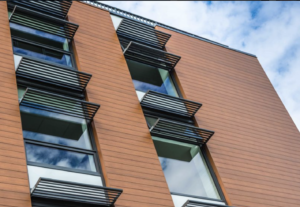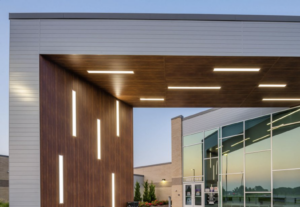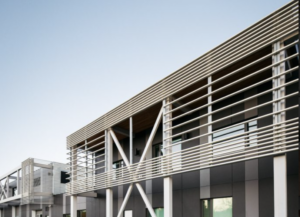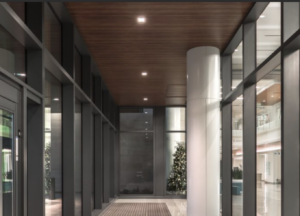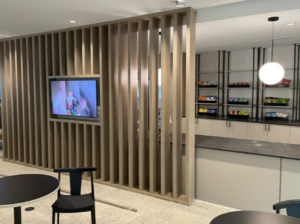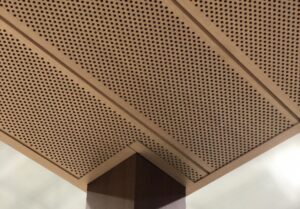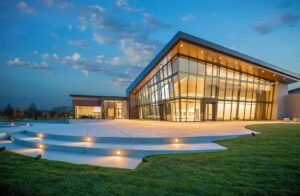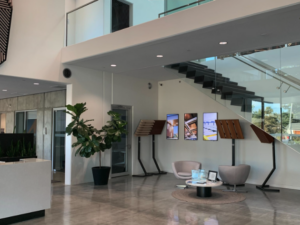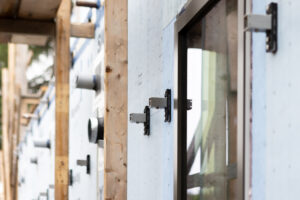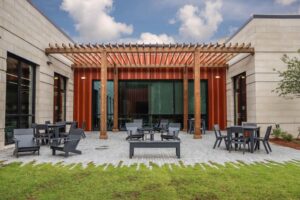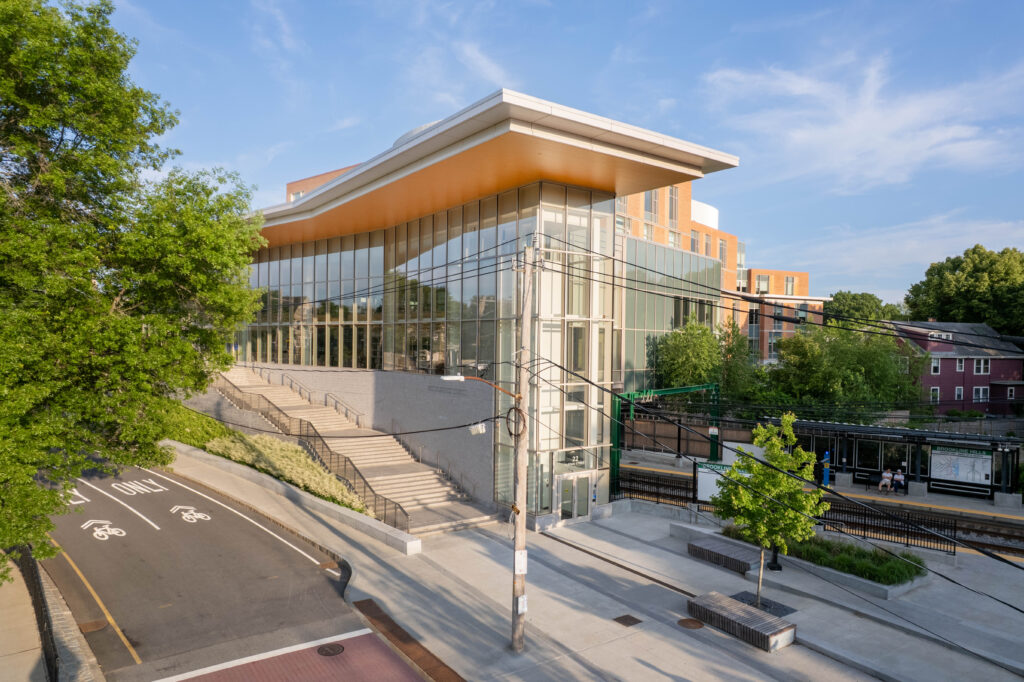
Over the Tracks and Into the Future: Andy Jonic, Brookline High, and the Quiet Reinvention of a Boston Suburb
Content Type:
Case Study
Project Type:
Education
System Name:
T&G Planks
Installation:
Exterior
Brookline, Massachusetts, nestles at the edge of Boston’s intellectual sprawl, balancing old New England elegance with urban proximity.
With its walkable neighborhoods, red brick facades, and civic-minded spaces, Brookline feels like a small town sharpened by big-city ambition. For architect Andy Jonic of William Rawn Associates, Brookline High School’s transformation offered more than a project, it offered a dialogue with legacy. “I always kind of wanted to live in Brookline,” he recalled. “Getting to work here, in some ways, felt like being welcomed into the town.” Jonic became a central figure in a five-year, multi-phase expansion of Brookline High School, one of the most architecturally thoughtful secondary school renovations in the country. This was not just an academic buildout. It was a civic reinvention.
By 2015, Brookline’s only public high school faced an enrollment surge it could no longer contain. The town launched a $116 million expansion, demanding a solution that preserved the school’s role as an architectural and cultural anchor. The boldest move: bridging the MBTA Green Line with a new building at 111 Cypress Street, known as 22 Tappan. Suspended on vibration-dampening columns, the structure serves as a literal and figurative bridge, connecting campus halves while reshaping the civic realm.
Fronting Cypress Playground, the first public playground in the U.S., the new building embraces history and community simultaneously. “The front porch overlooking the fields creates a direct connection to civic open space, that was key,” said Jonic. The “front porch,” a cantilevered entry plaza, anchors the design. “Students don’t just disperse here like they do at other schools,” Jonic noted. “They hang out here on the front steps, in the street for 45 minutes, sometimes longer. So we designed the building to hold that energy.” This wasn’t just a transitional design. It was social infrastructure, welcoming not just students, but neighbors, families, and commuters.
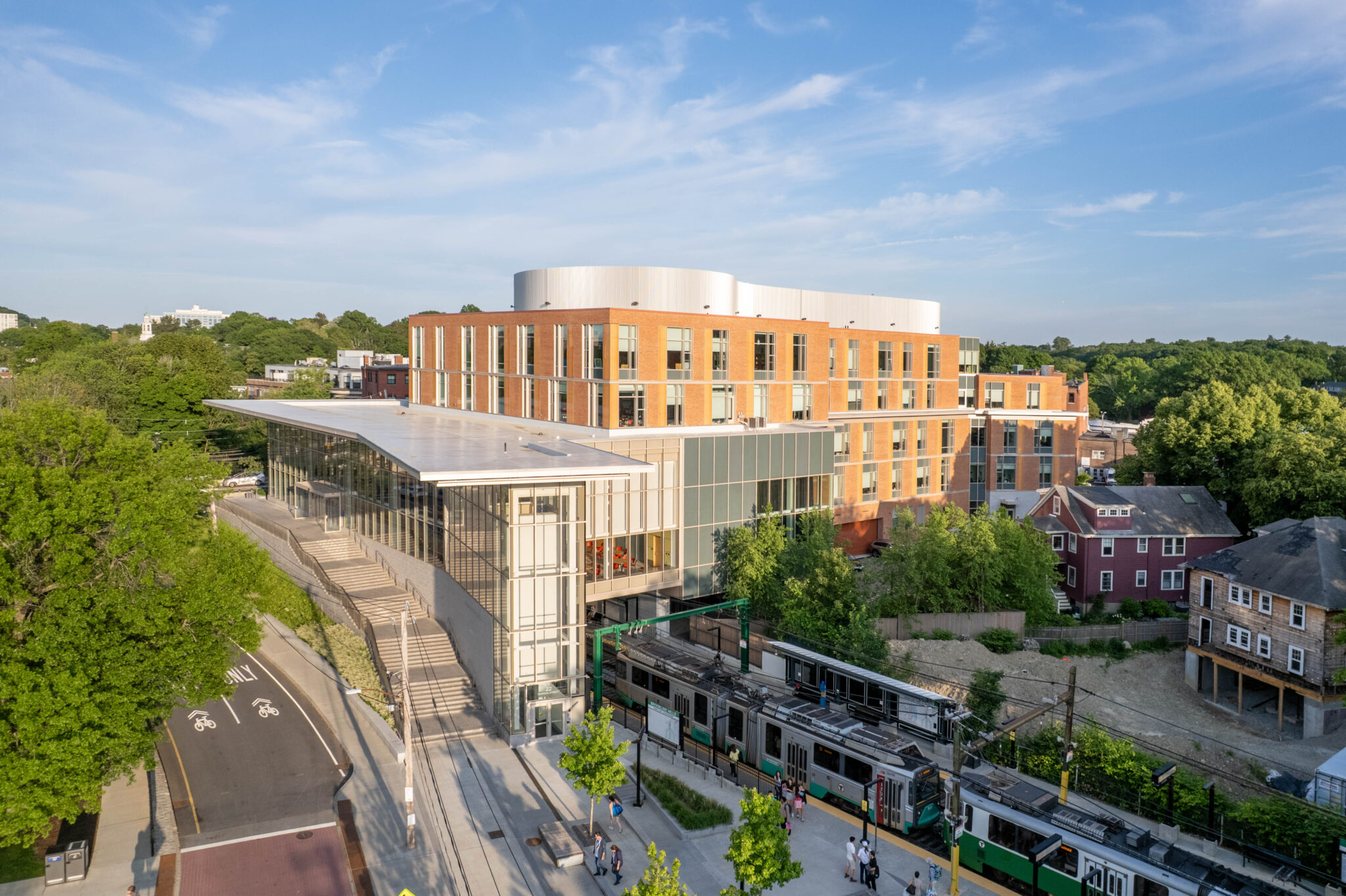
Community engagement guided nearly every major decision. “It starts right here with the school,” Jonic said, “but it’s also the town, it’s the community as a whole.” His team hosted over 130 meetings, town halls, MBTA forums, one-on-ones with teachers, and living-room sessions with residents. That input shaped everything from facade placement to pedestrian circulation. One key discovery: a steady flow of foot traffic from the neighborhood across Cypress Field to the train station. In response, the team created a wide, intuitive, and well-lit pathway, one that honored movement, visibility, and intuitive wayfinding. The STEM Wing, a significant addition, was designed with similar sensitivity. Its brick matches neighboring 19th-century buildings, while clerestory windows and collaborative zones reflect today’s educational needs.
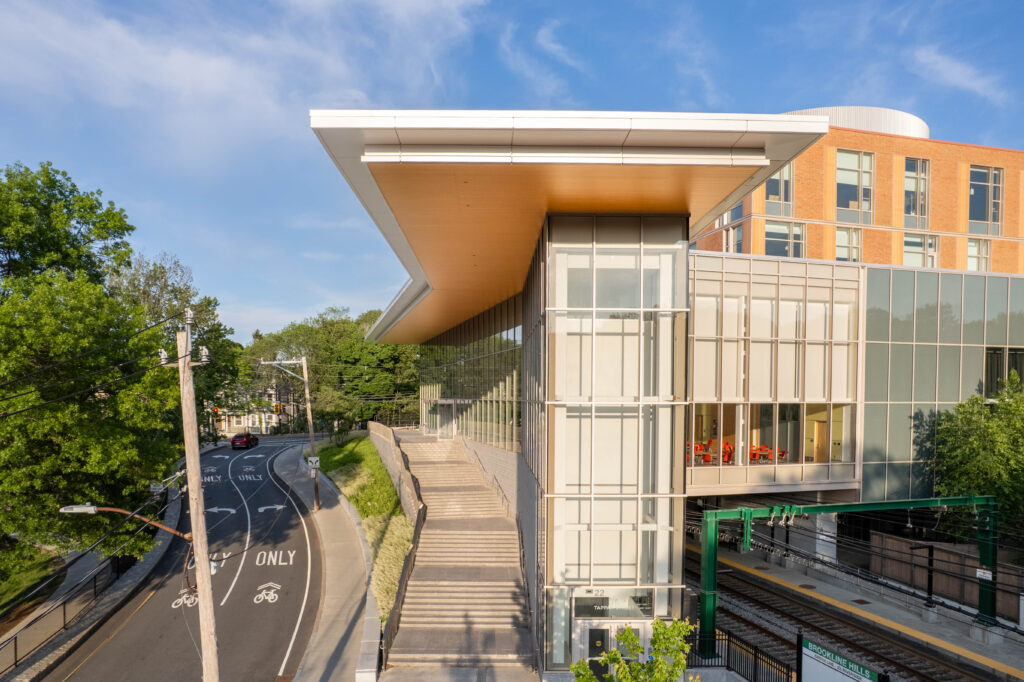
Jonic and his colleagues measure success not in square footage, but in use. “There was one science teacher who said she didn’t think architecture could change how she taught,” he remembered. “But once she moved into the STEM wing, it had. She looked forward to coming in every day.” “That’s what makes all the hard work worth it,” he added. “Seeing people enjoying the space. Seeing students fill the front porch. That’s the most exciting thing for us as architects. ”
Designing in Boston is never done in a vacuum. The city is layered with architectural DNA, none more prominent than Frederick Law Olmsted and H.H. Richardson, both of whom worked just across Route 9 from the school. Olmsted, father of American landscape architecture, championed democratic green space. His design ethos, restorative, inclusive, contextual, still permeates the landscapes around Brookline High, including the mature trees that frame the quad today. Richardson, meanwhile, gave America its own architectural voice with Romanesque Revival. His legacy, seen in buildings like Boston’s Trinity Church, taught architects how to give mass and meaning to public spaces. To design in Brookline, then, is to design within their shadows. And as Jonic discovered in Olmsted’s archived photos, it’s often about maintaining a dialogue across centuries. His team honored that inheritance by carefully matching bricks, softening silhouettes, and incorporating wood-look soffits, evoking the porches and materials of New England homes. “People were skeptical,” Jonic admitted. “But when they walked the new stairs or stood in the light-flooded cafeteria, their reactions changed. The building earned its place.”
“Fortunately, a lot of the historic city was preserved,” Jonic reflected. “That’s one of the reasons it’s exciting to practice here.” For him, Boston is a study in opposites: a city of preserved pasts and ambitious futures. “You’re always designing next to something sacred,” he said. “But it’s also full of students, energy, and movement.”
“When I think of Boston,” he added, “it’s the youth, the colleges, the urban fabric, the liveliness. It feels small, but that’s part of the charm.” Brookline High’s renovation captures that paradox. It blends reverence with risk. It invites the community onto the steps while launching students across the tracks.

The project’s success has not gone unnoticed. In 2024, Brookline High School received the CNU Charter Award for urban integration, as well as a 2022 Interior Design Citation for the STEM Wing. But perhaps what makes Brookline High School’s transformation so significant is not just its technical achievements, but its embodiment of a larger trend in Greater Boston and beyond: the blending of old and new, the careful stitching together of history and innovation. As Andy reflects on his five years with the project, he’s quick to deflect credit. “It was a real team effort,” he says. “From the town, to the school, to the construction crews, to the neighbors. We just helped bring it all together.” In the heart of Brookline, the new high school stands as a testament, not just to architectural excellence, but to the power of civic imagination. It proves that public buildings can honor their past while ushering in what’s next. That students thrive not only in classrooms, but on porches, sidewalks, and pathways. That the spaces between buildings can matter as much as the buildings themselves. And perhaps most importantly, it proves that good architecture listens first, and builds second.

